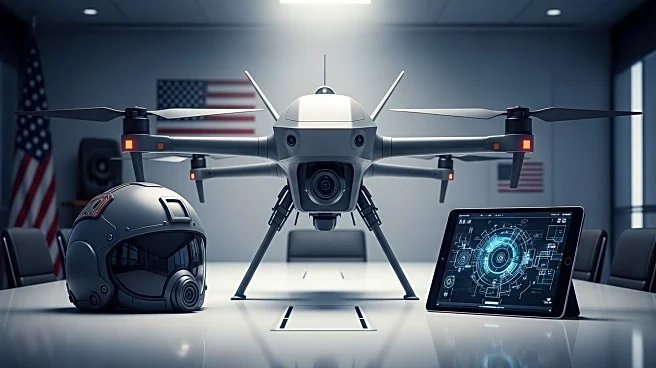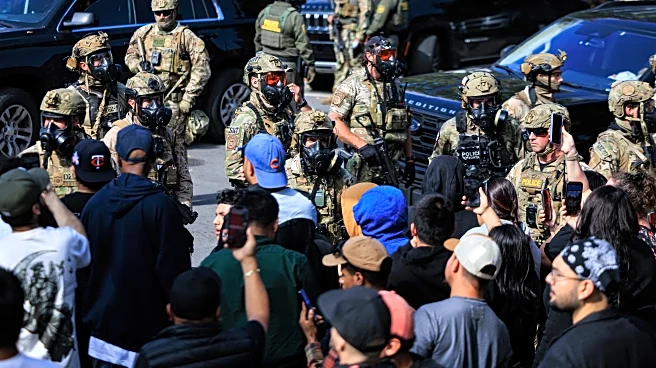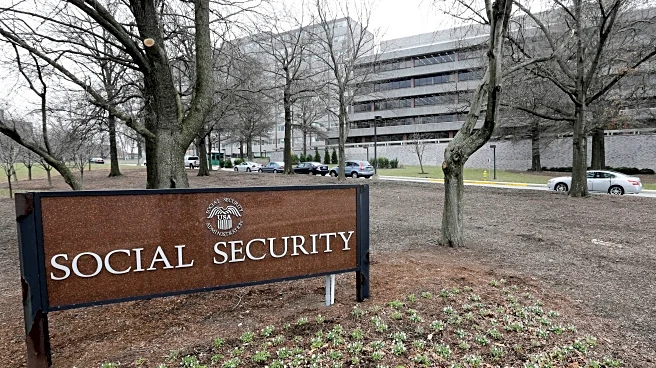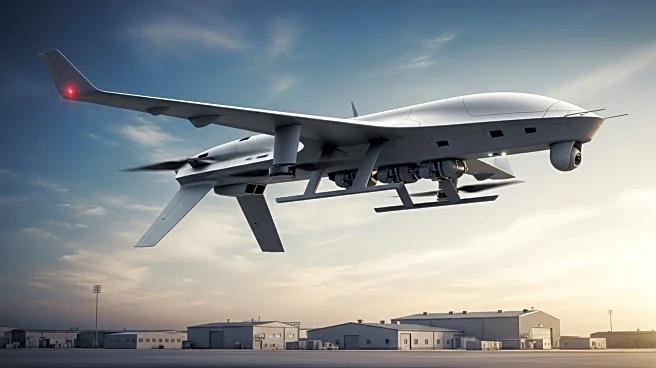What's Happening?
Army Secretary Dan Driscoll has identified China as a 'pacing threat' during the annual Association of the U.S. Army conference in Washington, D.C. Driscoll emphasized the importance of being prepared to provide security to Americans globally, while also
maintaining focus on homeland security and southern border operations. The strategic shift in military focus includes countering drug trafficking and supporting the Department of Homeland Security. The U.S. Northern Command has deployed approximately 10,000 troops to the southern border, and the Trump administration has sent thousands of National Guardsmen to American cities to assist ICE activities. Driscoll anticipates that the southern border mission will continue for years. Additionally, a joint announcement with Energy Secretary Chris Wright revealed plans to build a microreactor at a stateside base by 2027, addressing logistical challenges in the Indo-Pacific region.
Why It's Important?
The identification of China as a 'pacing threat' underscores the ongoing strategic focus on the Indo-Pacific region, which is crucial for U.S. military operations. The shift towards homeland defense and border security reflects a broader approach to national security, addressing multiple threats simultaneously. This strategy impacts military resource allocation and operational priorities, potentially affecting troop deployments and funding. The development of a microreactor aims to enhance energy security and logistical flexibility, crucial for maintaining military readiness in distant theaters. The continued emphasis on border security highlights the administration's commitment to domestic safety and immigration control, influencing public policy and national defense strategies.
What's Next?
The strategic focus on homeland defense and border security is expected to persist, with ongoing deployments and support for ICE activities. The construction of the microreactor by 2027 will be a significant step in addressing energy supply challenges in the Indo-Pacific region. Military officials will continue to assess and adapt strategies to balance global threats and domestic security needs. The rollout of the National Defense Strategy will further clarify priorities and resource allocations, potentially influencing future military operations and international relations. Stakeholders, including political leaders and defense agencies, will likely engage in discussions to refine and implement these strategies effectively.
Beyond the Headlines
The strategic shift towards homeland defense and border security raises ethical and legal considerations, particularly regarding immigration policies and civil liberties. The deployment of troops and National Guardsmen in domestic operations may prompt debates on the militarization of border security and its implications for civil society. The focus on energy security through microreactor development highlights the intersection of military strategy and environmental sustainability, potentially influencing future energy policies. Long-term shifts in military priorities could impact U.S. alliances and geopolitical dynamics, as the nation navigates complex international relations and security challenges.














